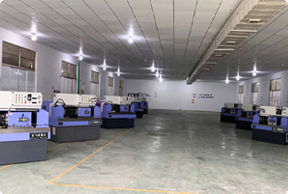
-
 Afrikaans
Afrikaans -
 Albanian
Albanian -
 Amharic
Amharic -
 Arabic
Arabic -
 Armenian
Armenian -
 Azerbaijani
Azerbaijani -
 Basque
Basque -
 Belarusian
Belarusian -
 Bengali
Bengali -
 Bosnian
Bosnian -
 Bulgarian
Bulgarian -
 Catalan
Catalan -
 Cebuano
Cebuano -
 Corsican
Corsican -
 Croatian
Croatian -
 Czech
Czech -
 Danish
Danish -
 Dutch
Dutch -
 English
English -
 Esperanto
Esperanto -
 Estonian
Estonian -
 Finnish
Finnish -
 French
French -
 Frisian
Frisian -
 Galician
Galician -
 Georgian
Georgian -
 German
German -
 Greek
Greek -
 Gujarati
Gujarati -
 Haitian Creole
Haitian Creole -
 hausa
hausa -
 hawaiian
hawaiian -
 Hebrew
Hebrew -
 Hindi
Hindi -
 Miao
Miao -
 Hungarian
Hungarian -
 Icelandic
Icelandic -
 igbo
igbo -
 Indonesian
Indonesian -
 irish
irish -
 Italian
Italian -
 Japanese
Japanese -
 Javanese
Javanese -
 Kannada
Kannada -
 kazakh
kazakh -
 Khmer
Khmer -
 Rwandese
Rwandese -
 Korean
Korean -
 Kurdish
Kurdish -
 Kyrgyz
Kyrgyz -
 Lao
Lao -
 Latin
Latin -
 Latvian
Latvian -
 Lithuanian
Lithuanian -
 Luxembourgish
Luxembourgish -
 Macedonian
Macedonian -
 Malgashi
Malgashi -
 Malay
Malay -
 Malayalam
Malayalam -
 Maltese
Maltese -
 Maori
Maori -
 Marathi
Marathi -
 Mongolian
Mongolian -
 Myanmar
Myanmar -
 Nepali
Nepali -
 Norwegian
Norwegian -
 Norwegian
Norwegian -
 Occitan
Occitan -
 Pashto
Pashto -
 Persian
Persian -
 Polish
Polish -
 Portuguese
Portuguese -
 Punjabi
Punjabi -
 Romanian
Romanian -
 Russian
Russian -
 Samoan
Samoan -
 Scottish Gaelic
Scottish Gaelic -
 Serbian
Serbian -
 Sesotho
Sesotho -
 Shona
Shona -
 Sindhi
Sindhi -
 Sinhala
Sinhala -
 Slovak
Slovak -
 Slovenian
Slovenian -
 Somali
Somali -
 Spanish
Spanish -
 Sundanese
Sundanese -
 Swahili
Swahili -
 Swedish
Swedish -
 Tagalog
Tagalog -
 Tajik
Tajik -
 Tamil
Tamil -
 Tatar
Tatar -
 Telugu
Telugu -
 Thai
Thai -
 Turkish
Turkish -
 Turkmen
Turkmen -
 Ukrainian
Ukrainian -
 Urdu
Urdu -
 Uighur
Uighur -
 Uzbek
Uzbek -
 Vietnamese
Vietnamese -
 Welsh
Welsh -
 Bantu
Bantu -
 Yiddish
Yiddish -
 Yoruba
Yoruba -
 Zulu
Zulu
Guidelines for Efficient Setup of Wholesale Thread Rolling Machines for Optimal Performance and Productivity
The Essentials of Setting Up a Wholesale Thread Rolling Machine
In the competitive world of manufacturing and wholesale operations, thread rolling machines play a crucial role in producing high-quality threaded products. Proper setup of these machines is essential for achieving efficiency, accuracy, and consistency in production. This article outlines the key steps involved in setting up a wholesale thread rolling machine.
Understanding Thread Rolling Machines
Thread rolling is a process for creating threads by deforming metal, which can result in stronger threads compared to cutting processes. Thread rolling machines can vary in design, but they generally operate on the principles of applying pressure through rollers to shape the material. Selecting the right machine for your specific needs is the first step to ensure optimum performance.
Preparing for Setup
Before beginning the setup, it is essential to ensure that the working area is clean and free of any obstructions. Check that you have all necessary tools and materials ready, including the machine itself, the raw material, and the required tooling for the operation. A comprehensive understanding of the machine’s manual and specifications will greatly benefit the setup process.
Step-by-Step Setup Process
1. Machine Placement Position the thread rolling machine on a stable, level surface. This is important to prevent vibrations that can affect the accuracy of the threads produced. Make sure there is ample space around the machine for operators to work safely.
2. Aligning the Components The next step is to align the rollers and the workspace where the material will be fed. Incorrect alignment can lead to premature wear of the rollers and subpar thread quality. Follow the manufacturer's guidelines to ensure proper alignment.
wholesale thread rolling machine setup

3. Setting Rollers Adjust the rollers according to the thread specifications required for your project. Most machines allow you to set the depth of the thread and the pitch. Typically, you will refer to the machine's tooling guide to determine the correct settings based on the desired thread profile.
4. Feeding the Material Once the rollers are set, load the raw material into the machine. It is important to ensure that the material is secure and fed straight into the rollers to avoid damage and ensure uniform threading.
5. Trial Runs Conduct trial runs with sample materials to verify the settings. Monitor the output closely for any inconsistencies or defects in the threaded parts. Adjust the settings as necessary, and repeat the trials until the desired quality is achieved.
6. Final Adjustments Once satisfied with the trial runs, perform a final check of all settings and secure any loose components or tools. It is also advisable to run a few production pieces to ensure that there are no unforeseen issues in the manufacturing process.
Maintenance Considerations
After successfully setting up the machine and beginning production, regular maintenance becomes crucial. Keeping the thread rolling machine in good condition will prolong its lifespan and optimize production efficiency. Make it a habit to clean the machine after use, lubricate moving parts, and conduct periodic inspections for wear and tear.
Conclusion
The setup of a wholesale thread rolling machine may seem daunting, but by adhering to these key steps, manufacturers can ensure a smoother, more efficient setup process. With precise setup and regular maintenance, thread rolling machines can significantly contribute to high-quality production, meeting both manufacturer and customer expectations in the competitive wholesale market. Understanding the intricacies of machine setup not only enhances production capabilities but also fosters a culture of quality and precision in the manufacturing process.
